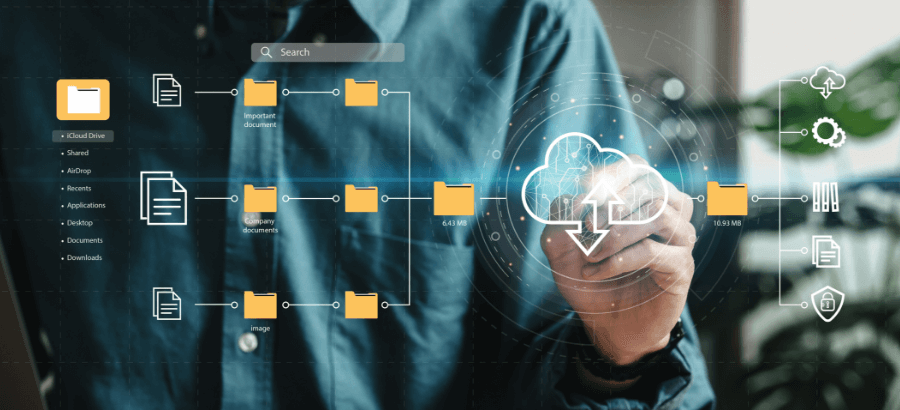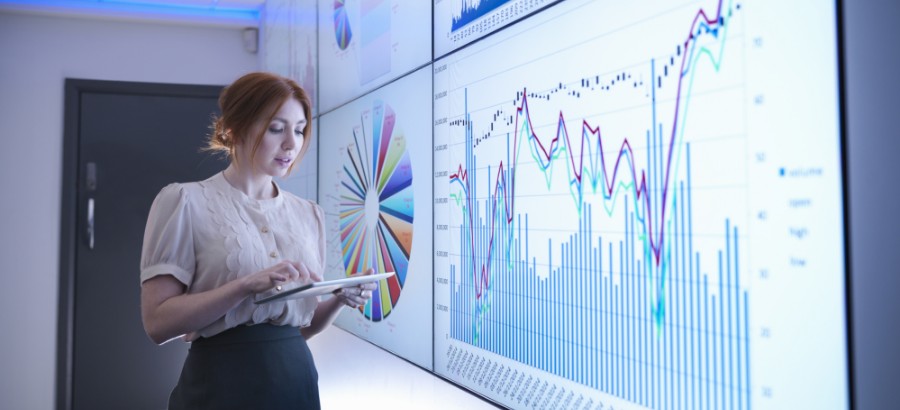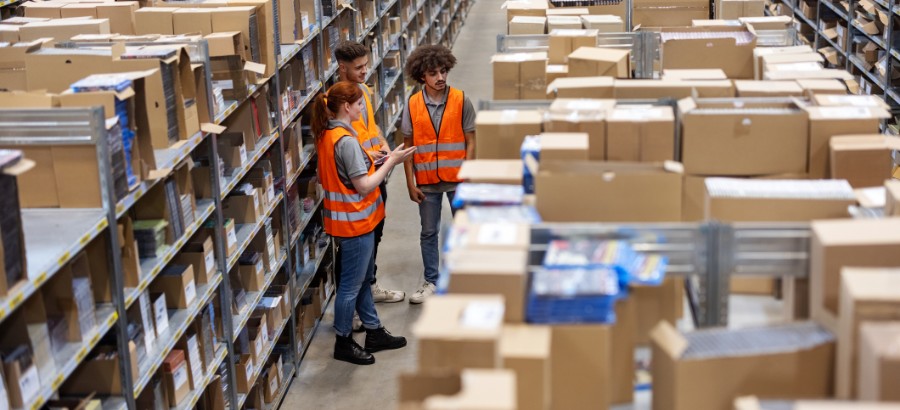Two predictions have come true during the pandemic. In a 2015 TED talk, Bill Gates warned about the spread of a potential virus and that organizations and governments were not prepared for it. A year before, in 2014, a Harvard Business Review article pointed out that supply chains were becoming increasingly global and complex and consequently more at risk than before. It went on to add that the consequences for significant disruptions were enormous. In 2021 we find governments and organizations now grappling with these predictions and how best to deal with the outcomes of these predictions.
Many organizations are used to managing known risks disrupting the supply chain, especially where they can predict the likelihood of occurrence and magnitude of impact. But for that special class of disruption, the low-probability, high-impact events like natural disasters, epidemics and other upheavals, organizations don’t know how to mitigate the risk and successfully manage their supply chains, and are now trying to find their way through the minefield of issues and challenges with no clear solution.
According to McKinsey, the value of goods traded globally has tripled to more than US$10 trillion since 2000, and because of recent events, they are having to re-evaluate supply chain strategies. Unfortunately, the state of disruption to the current landscape has never been contemplated and very few strategies exist to navigate it.
Supply chain disruptions
The world has experienced significant disruptions in recent years which have broken the understanding about what is “normal”. For example:
| Japan earthquake 2016 | US-China trade war 2018 | Suez Canal blockage 2021 |
One source reports disruptions increased over 60% between 2019 and 2020.
Until recently, supply chains and other business functions focused on efficiency and cost. JIT(Just-In-Time) deliveries and lean manufacturing (reducing times in production and in supplier response) were the goals of many manufacturers. Now it is unlikely they will go back to making things in that “old normal” way.
New trends in supply chain management
Supply chain resilience
Many analysts and consultants are pointing out that supply chain resilience is going to be the main goal, and many businesses are planning to increase resilience across their supply chain. Resiliency is defined as the ability of a supply chain to cope with unforeseen events with minimal disruption and quickly recover after it occurs. The key is continuity of supply, production and delivery of products and services to customers.
| Plans to increase resilience across the supply chain | 93% |
| Expect changes to supply chain planning after COVID | 54% |
| Plan to increase digital supply chain staff in-house | 90% |
Source: McKinsey
Many of the current (pre-Covid) business models focused on partnering with suppliers and “make them part of your business” because the closer they are to the business the better they can understand the issues and respond. Unfortunately, that model is unlikely to ensure continuous supply to the business in these new times.
There is a strong school of thought that business models need to be fundamentally redesigned with the center of the model being the customer and all material and information flows around this. Previous business models were about the business with the customer at the end of the supply chain but with the digital disruption, the customer is becoming more and more demanding with shorter and shorter expected delivery times. Without changing the business models, the ability to service the customer may never satisfy the new customer’s expectations.
For some time now, strategy has dictated that securing supply is the number one priority, and the relationship can be built after that once the common goal has been achieved. Control of the supply chain is based upon transparency and availability of information – a business can work around issues provided that they have the information early enough. Single supplier supply-chains are always at risk of unforeseen events controlling delivery, and often there is no alternative options to assist a work around. The move to a dual or multiple supplier model will be critical to meet the supply chain demands should any further disruptions occur.
“Hidden Risk” suppliers
Common supply chain disruptions of the past – supplier performance, forecast errors, transportation breakdowns – used historical data to predict and manage risk. According to the 2014 Harvard Business Review article, most companies focused their risk-management activities on suppliers with the highest spend and performance impact, and ignored “hidden risk” suppliers where spend is low but the impact of a disruption is high. Without realizing it, there are small suppliers in the supply chain that can bring the manufacturing process and delivery to the customer to a grinding halt. Best Practice for the modern supply chain dictates that all suppliers are ranked using a risk rating and plans are put in place to mitigate these risks. A strategy needs to be developed on how best to manage all of the different suppliers, and often a strategy for each customer may be needed. This may even suggest much larger safety stocks and in some cases, a whole new sourcing agreement. The business will need to fully understand the impact that the supplier can have on their ability to manufacture and supply product into their market.
Often a tool like a Failure Mode and Effect Analysis (FMEA) is useful as it serves as a checklist and ensures that the business is thinking about these issues and considering mitigation plans.
Review sourcing and suppliers
Part of the FMEA process should result in the business reviewing the sourcing strategies for the business to avoid major issues. This means identifying and securing alternate sources for all risky materials. The alternate sourcing strategy should consider suppliers from different parts of the world as regional issues often affect supply and sourcing a product from two suppliers in the same region would not mitigate this issue. Near-sourcing should be considered as a material strategy because, as we have seen recently, anything can derail the successful shipping of a product from afar.
From past experience, one area that needs to be developed is the use of the same part or product from different suppliers as it may well respond differently to the manufacturing process. As an example, the same grade of steel produced in Japan and China responded differently even though the specification is standard. Trial the product from the different suppliers and identify the short list based upon it being usable in your process. Another trend that is becoming prevalent is to engage with suppliers in a digital supply chain. The reason for this is that resilient supply chains will require flexibility to enable switching of production lines and capacity, as well as sourcing of alternate parts when needed. Suppliers will be able to log into a portal to update the current status of orders and their delivery dates so that slippages are immediately identified and communicated. A digital supplier portal will be ideal for the real time information required to manage the processes.
Inventory
The pandemic has shown that companies struggle to have the correct distribution of parts in the inventory holding. This will also limit their ability to predict what will become the next scarce item and prevent line stoppages. Most companies manage inventories by focusing on safety stock models in their requirements planning. But there are different forms of stock that manufacturers need to manage.
| FORM |
| Raw materials: supplier owned |
| Raw material: company owned |
| Work-in-progress inventory |
| Finished goods in warehouse |
| Finished goods in the channel |
| Consignment Stock at the customer |
| Pre-allocated inventory |
Source: www.supplychainshaman.com
Although companies have resisted in the past tying up capital in inventory, it makes sense to do so when shortages and disruptions are apparent. Inventory buffer sizes need to regularly be assessed as increasing a buffer in the wrong place locks up capital but may not alleviate the risk. It may also be more important to reposition inventory in certain regions.
Without a thorough analysis of the supply chain and the consumption models, the business may still find itself running out of critical inventory.
Production planning
The production planning function that supports resilience will have the capability to switch product mixes to adapt to a disruption. Depending on supply availability, what is the planning functions ability to maintain full production capacity in the plant? An ERP application’s Master Production Scheduling system may need to suggest a plan that is based on inventory on hand, rather than what is required by anticipated customer orders. But this also needs to factor in the trade-offs required to keep the cash flow intact. For example, fixed orders against an order vs promised stockholding need to be reviewed and all saleable resources allocated to the definite orders. Can any orders or deliveries be deferred, and the resources used for another customer.
While this may not be ideal, consideration may also be required to identify what is needed to keep the plant running, especially those plants that cannot be turned off and then restarted quickly like a furnace. The alternatives of plant closures, layoffs and incomplete products are not pleasant.
Fulfilment
In a volatile and unpredictable environment, fulfilment strategies should be more granular and segmented to meet disparate requirements in different categories and geographic markets.
As mentioned above, firm orders must take priority. In a similar vein, priority customers must take preference over less critical customers.
Fulfilment during a major period of disruption will need to be carefully detailed and reviewed daily, or whenever updated information about supply is made available. It will be based upon trade-offs and only the business leadership can make those trade-offs. There will be customers that will suffer but it will be a best guess process.
Collaboration
A resilient supply chain requires new processes and teams to monitor performance at all the steps in the value chain and assess new threats on a continuous basis, rather than at annual or quarterly executive meetings. This will mean going beyond just close suppliers to look at the supply chain in its entirety, as severe impacts may not come from sources that the company deals with directly.
Meaningful KPI’s will become more critical to identify issues as early as possible.
Review supply chain model
For many years the ASCM SCOR model has been the standard tool to evaluate, monitor and improve an organization’s supply chain. It should be remembered though that it was developed in the early days of enterprise software and, in some ways, it has not kept up with changes in how businesses operate nor with advances in technology. A new model, the Digital Capabilities Model for Supply Networks, is being developed by the ASCM and Deloitte to guide the development of digital supply networks that moves away from linear supply chains into a set of dynamic networks.
It is recommended that the business reviews some of the models available to find a best fit for their business and the industry where they operate as different industries use different fulfillment models.
Changing supply chain investment
A recent survey shows how supply chain investments are changing – from a focused cost management model to increased flexibility and resilience, even if it costs a bit more. Strategic placement of inventory along the supply chain is critical to being able to flex and absorb disruptions.
Supply chain investment goal changes
| INVESTMENT GOAL | LAST 3 YEARS | NEXT 3 YEARS |
| Flexibility | 35% | 60% |
| Increase resilience | 14% | 41% |
| Reduce costs | 63% | 36% |
| Business continuity | 17% | 35% |
| Improve customer service | 33% | 22% |
| Speed | 29% | 13% |
Source: Bain & Co, Digital Supply Chain Institute, 2020
Manufacturers are clearly concerned about disruptions and are looking to improve the resiliency of their supply chains to handle both global and local disruptions. A supply chain resiliency strategy aims to maintain performance measures during potential disruptions including fulfillment of orders, delivery reliability, and customer satisfaction. It will require companies to review “old normal” practices, re-assess how technology can be used to innovate supply chain management, and work in collaborative teams to enable new levels of efficiency and resiliency in producing manufactured goods. But it will also require solid logical thinking by the business leadership to ensure the main risks are foreseen as best as possible and the mitigation measures are maintained.
One area very seldom discussed in any business model is the effect of “Corporate Memory”. Risk mitigation steps are put in place and because they are so effective, the business avoids all of the possible pitfalls. Without any “Corporate Memory”, a new manager will arrive and challenge the process, ultimately stripping away the strategic stockholding to save money. When another disruption occurs, the business will revert back to this model without understanding why it was ever changed.







